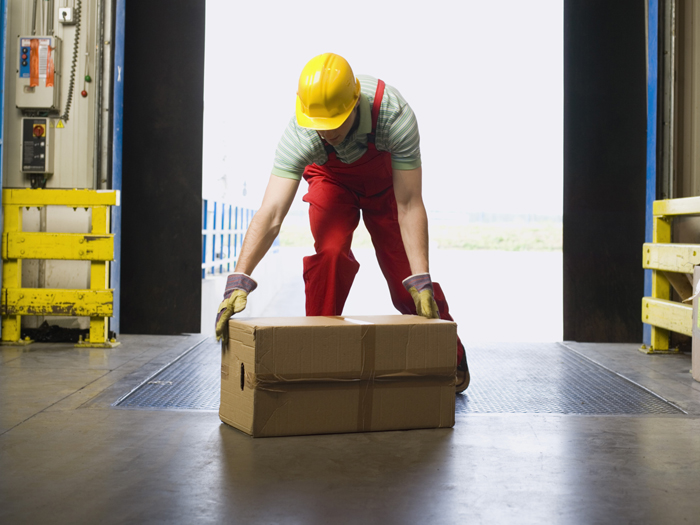Ergonomic Exposures
Rely on Numbers, Not Behavior, to Cut Lifting Risks

Across-the-board weight restrictions and familiar maxims like “lift with your legs” have likely become conventional wisdom when it comes to worker safety.
But can data and engineering mitigate risks that training and behavior change aren’t able to?
According to a recent Ergo Expo Webinar Wednesday presentation, where tasks involve lifting, pushing, pulling, and carrying, a few numbers can go a long way.
In the presentation, Humantech’s Kent Hatcher and Jeff Sanford said that a smarter approach to ergonomics can lead to the kind of success employers have enjoyed in other areas of injury prevention.
“Employers have gotten really good at preventing cuts, scrapes, and burns, but they’re frustrated with ergonomic injuries that they are still having,” Sanford said.
To prevent these frustrating injuries, Hatch and Sanford advised using the National Institute for Occupational Safety and Health’s lifting equation to analyze tasks, what they involve, and how they are performed.
‘It depends’
Hatcher pointed out that using the NIOSH formula involves “multipliers,” so that while a general limit might be to lift no more than 51 pounds during one shift, that number might get smaller depending on how something is held or lifted or if twisting is involved.
Also, many lifting tasks involve multiple tasks and multiple periods of lifting as part of the overall task.
“What really happens is as the multipliers get worse and worse, that 51 pounds starts to erode and your recommended weight limit gets lower,” he said. “A weight of 40 pounds can be hugely different depending on where that weight is coming from.”
Sanford agreed that universal weight limits don’t take tasks’ individual factors into account.
“What should our weight limit be?” Sanford said. “Our answer is always, ‘It depends,’ and it depends on these multipliers.”
The importance of the multipliers is perhaps underscored by how intricate NIOSH’s explanation of them is — checking in at some 164 pages, the applications manual for the equation details some of the case-specific considerations that may arise.
Even though it has been around for 20 years now, Hatcher commended NIOSH’s equation as “still the gold standard” for reducing the risk of injury during lifting and lowering tasks.
“It allows you to recognize risk by data rather than just something like people’s complaints,” he explained. “You can work clean through the numbers.”
Sanford agreed.
“If you asked most organizations what’s your greatest risk lift, you’re probably going to get it wrong without the data,” he cautioned.
Reducing hazards through quantification.
The way to get the biggest ergonomic bang for your buck, in Hatcher’s and Sanford’s view, is to get below the NIOSH threshold using the lifting equation.
“Any time you get a lifting index of more than 3.0, that’s dangerous,” Hatcher explained. “What that means is you’re asking people to lift three times more than what NIOSH recommends for 90 percent of men and 75 percent of females.”
Instead, paying attention to the numbers can help bring down the risks involved with lifting.
“If you can engineer out the ergonomic risks, your program is going to be much safer than if you rely on behavior changes,” Hatcher said. “You don’t have to rely on behavior changes or a strong back to eliminate the risk.”










